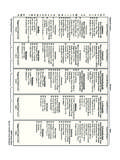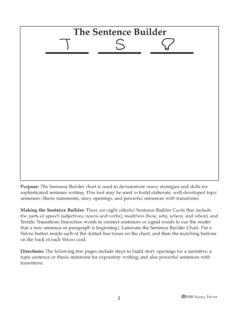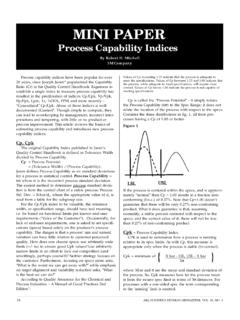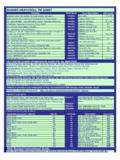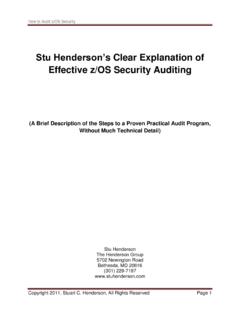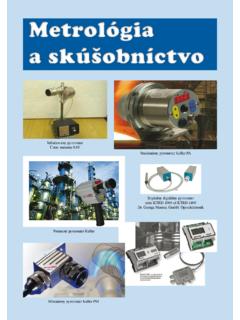Transcription of Reading Strategies Flow Chart - Nancy Fetzer's …
1 Purpose: The Reading strategieschart visually displays thereading Strategies in a specificsequence, so students learnexactly when and how to uti-lize : The Reading strategieshave been organized (on thechart) in the order they aremost effectively used. Thesestrategies include: In the topbox, text-self-world connec-tions, monitoring and summa-rizing; in the bottom left box,clarifying with visualization,identifying and organizingimportant information, andproblem solving an unknownword with context clues; and inthe bottom right box, havingan emotional reaction, askingquestions, and making predic-tions.
2 Directions: While Reading ashort story , the Strategies areintroduced and modeled (bythe teacher) to the whole on the range ofreading levels in the class, thestudents may read the text independently, in pairs, or listen to the text on a CD, cas-sette tape, or through teacher read aloud. At and above grade level readers read (inpartners) the story/text at their desks. Slower-progressing students are grouped at thesmall group table, so the teacher can read the text to them or play the CD or tape if it isavailable. Periodically during the Reading , the teacher stops the class to introduce andmodel a strategy.
3 At the small group table, the slower-progressing students have addi-tional stops in their Reading for more repetitions of the Strategies . Students that orches-trate the Reading Strategies competently are encouraged to read independently, butcontinue to stop throughout the text to discuss the it with another independent note: See the following four pages for the directions to teach each part of thereading Strategies flow Chart , and subsequent pages in this chapter for supplementalreading strategy activities. 2006 Nancy Fetzer86 SUBJECT:SETTING:SETTING:CHARACTER:READIN G STRATEGIESIf Good Readers don tUnderstand,They Rereadand Ask: WorldSelfTextRead and.
4 Then When Their When? Where?Who?What Did Do?What Happened to ?Story Summary:..andpaint a picture,because the author used a lot of describing words?..and list a lot ofinformation,becausethe author wroteabout many things?Do I Needto Good ReadersUnderstand, are Readers,..And Summarize to Check for Understanding:..make a an emotional Read On!..ask :When? Where?Who? or What?What About ?Information Summary:BIG IDEA:to figure-out a tricky word or phrase?..and use text clues, Reading Strategies 2005 Nancy FetzerReading Strategies Flow Chart Inform: Good readers, read andmake connections, then stopwhen their brains are full: Thissection of the organizer is toshow how good readers arealways making text-to-self,text-to-world, and text-to-textconnections.
5 These connectionsprovide the reader with outsideresources (their own experi-ences, the world, and othertexts) to make inferences andpredictions, to have emotionalreactions ( , using a similarexperience to empathize orstand in another character s shoes),to visualize, or to ask teacher refers to the read-ing connections on the Chart asthe Reading connection team.(See the Reading connection steam manipulative circles inthis chapter for a more focusedlesson to teach this strategy.) Additionally, in this section of the Chart is a stop sign signalingfor readers to stop when their brains are full.
6 In other words, good readers always attend tohow much information is in the text, so when their brains have too much information or ifthe text doesn t make sense, then they stop. (See the next section of the Chart , summarizing,for the strategy to utilize after the stop sign that monitors : The teacher models the steps for this part of the Chart , then students rehearsethe steps (orally and with motions): Good readers read (open hands like a book) and make con-nections (pretend to grab at the connections in the air), then stop (hold out an open hand)andcheck for understanding (make a check with an index finger)when their brains are full (hold aflat hand near the forehead).)
7 As students read a portion of the text, the teacher stops them to model how to use this partof the Chart : In the beginning of this story, the author has written a lot about a tree house, so mybrain is full, and I need to stop and check for understanding. I m pointing to the connections bubblebecause my Reading connections team is going to help me make a text-to-self connection about a treehouse. I remember my tree house was a place where fun and exciting things happened. Now, let s con-nect this outside the book information to the story we re Reading .
8 Because I have this connection tothe text (the tree house), I can feel the excitement the characters will feel when they see it for the firsttime. Also, I can use my five senses to visualize the tree house setting, like I m there. Now let s sum-marize to check that we really understood what we Strategies Flow Chart 2006 Nancy Fetzer87 WorldSelfTextRead and ..Then When Their Brains are Readers, Summarizing: After stu-dents stop Reading becausetheir brains are full, theyneed to summarize tocheck for understanding. Agood reader automaticallysorts the critical points oftext from less importantinformation.
9 Many timesconfusions in text occurwhen readers perseverateon unimportant, minordetails, while ignoring criti-cal Summary: If thetext is a narrative, they thenanswer the summary ques-tions: Setting: When and where isthis part of the story occur-ring?Character: Who is drivingthe action in this part of thestory?Plot: What did (character)do, or what happened to(character)?Information Summary: Ifthe text is informational,they then answer the summary questions: Setting:When and where is this information occurring?(Setting for informational text isoptional.)
10 Subject:Who or What is your information about? Big Idea: What is the big idea about the information?If students are able to answer the summary questions, they then move to the steps inthe happy face box on the Chart . If they are unable to answer all the summary ques-tions, they then move to the unhappy face box for rereading Strategies Flow ChartSUBJECT:SETTING:SETTING:CHARACTER:W hen? Where?Who?What Did Do?What Happened to ?Story Summary:..And Summarize toCheck for Understanding:PLOT:When? Where?Who? or What?What About ?
